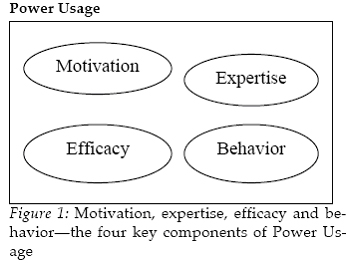Media Effects Research Lab - Research Archive
Who are these power users anyway?
Student Researcher(s)
Sampada Marathe (Ph.D Candidate);
Marije Nije Bijvank (Masters Candidate);
Henriette van Vugt (Masters Candidate);
Jolanda Veldhuis (Masters Candidate);
Faculty Supervisor
INTRODUCTION
Who are these power users and what makes them different from non-power users? Are they called power users because of their power to command industry attention to their evolved levels of technology use? Are power users the earliest adopters of technological innovations? Are they also the heaviest users? Or simply the ones who use most or all aspects of a technology? This paper explicates the concept of power usage among technology users by conducting a survey of 454 respondents in an international sample of technology users. Literature-based categorizations of the social and behavioral aspects of these users are contrasted with data-driven constructs in their ability to predict the volume of everyday use of simple and complex communication technologies. Our discussion focuses on implications for developing a power-users scale as well as its role as an important individual-difference variable with potential to moderate psychological effects of communication technologies.

METHOD
In order to explore these above mentioned characteristics of power users, data were collected in three stages over the span of one year. The first stage was a survey administered to undergraduate students in communication classes. This survey was conducted in a lab setting on a University campus in the United States. Students participated in this survey either for extra credit or as part of their course requirement.
For the second stage, more undergraduate participants were recruited six months later from communications classes at the same University. The survey was conducted online and a link for the survey was sent to the participants via email. They were given four days to go online and fill out the questionnaire. They were instructed to complete the survey in one sitting and to make sure that there was minimum disturbance when they completed the survey.
For the third stage, to assemble a more diverse sample, snowball sampling was employed. The investigators sent out mass emails to colleagues and other acquaintances and asked them to forward the survey to as many people as they could. No restrictions were placed on who could fill out the survey. An effort was made to internationalize the sample.
RESULTS
The most significant dimension of power usage in predicting technology behaviors in both Type I and Type III tests is Motivation. More specifically, we found that motivation is positively related to use of email, browsing of websites, word processing, online shopping and using different devices among other things. Behavior was the next best predictor, and was significantly related to programming, blogging and using a computer to play games and watch movies.
An exploratory analysis to determine data-driven groupings revealed 5 significant factors based on examination of eigenvalues and the scree plot. These factors were labeled as follows: Technophile, Indispensability, Mastery, Efficiency and Informed Use.
CONCLUSIONS
When the four normative distinctions (motivation, expertise, efficacy and behavior) were analyzed, we found that motivation to use technology significantly predicted the most common behaviors such as using a computer to send emails, browsing websites, shopping online and engaging in word processing. It can be argued that these behaviors, although at the low end of the power usage scale in terms of common everyday use, represent the majority of regular users of technology. Higher-end behaviors such as programming, playing games on computers, watching movies on computers and blogging, which involve significantly more resources and skill, are predicted by power usage behavior that involves multitasking and making good use of most features afforded by the technology. Surprisingly, expertise and efficacy dimensions of power usage did not predict behaviors significantly.
The data-driven analysis, for the most part, showed a pattern similar to the theory-driven predictors. It is important to note, however, that all of these predictors have in them all four elements from the normative constructs. To illustrate, we consider the construct of technophile, which came up as the most prolific predictor of technological behaviors. Being a technophile has the element of motivation (love to use gadgets), expertise (make good use of most features), efficacy (like to challenge myself to figure out how to use a new technology) and behavior (explore all available features). Intuitively then, these distinctions are probably more psychologically valid. Perceived indispensability was significantly associated with using a computer, email, browsing websites and engaging in word processing. Given the extensive use of computers in daily life today, this pattern is not surprising. The construct of mastery was found to be significantly associated with behaviors such as using a computer to browse websites, IMing or chatting and using a cell phone. The need for efficiency was made of constructs such as experiencing frustration when made to go through basic steps and not wanting to keep confirming decisions once made. This construct was found to be significantly associated with IMing or chatting and using a digital camera, both tools clearly signaling efficiency in their own way. Informed use, characterized by being able to use shortcuts and being able to provide help to friends about technology use, was significantly correlated with programming, using a PDA and watching movies on a computer – items that are generally associated with experience and knowledge that advanced users need to have.
For more details regarding the study contact
Dr. S. Shyam Sundar by e-mail at sss12@psu.edu or by telephone at (814) 865-2173

